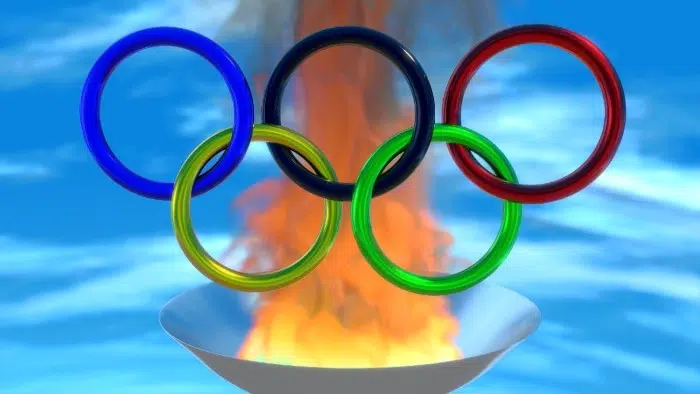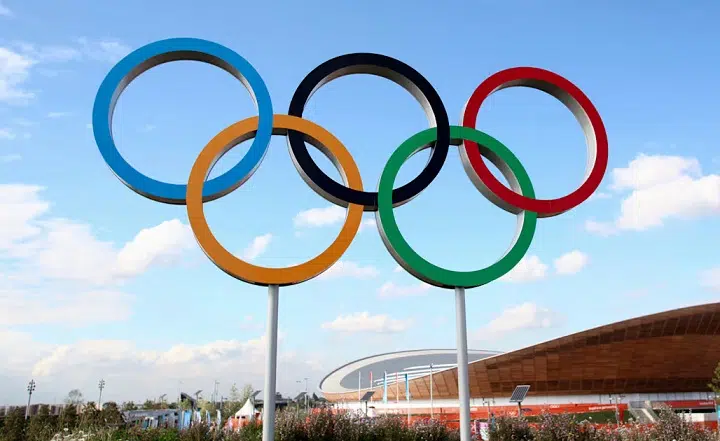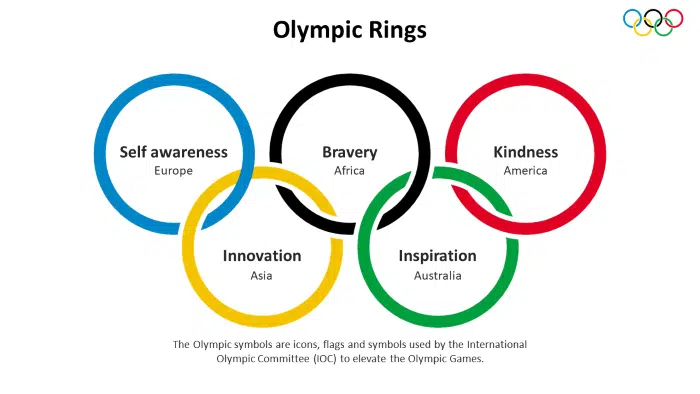Symbols are the simplest yet most effective way through which human beings impart meaning. They are short, visual, and understood directly without recourse to frontiers and languages. The Olympic symbol is perhaps the most revered and most beloved symbol on the entire globe. It is more than a good, but a symbol of peace, sportsmanship, and concord. Individuals question the Olympic symbol: what is it, how did it emerge, and why does it have relevance in and out of sport.
The Olympic symbol is known by two billion individuals worldwide. It is not only painted on the flags and Olympics stadiums but also employed on clothing, products, advertisements, and social media. It stands for something more than an event — it stands for the unity of humanity through the medium of sport.
Understanding What a Symbol Is
Symbol: A mark or image which represents more than itself. A symbol for love ♥ represents love, a symbol for peace ☮ represents peace, and the Olympic ring symbol represents international sport unity.
Symbols function just because they are simple and recognizable to all. You don’t have to read letters so that you can get them. The Olympic rings, once you see them, then automatically present to you the Olympic Games and its principles of unity, competition, and equality.
Origins of the Olympic Symbol

The Olympic symbol of five rings joined together was created in 1913 by Pierre de Coubertin, the founder of the modern Olympic Games. He desired a symbol to reflect internationality of games and global solidarity of continents.
| Feature | Meaning |
| Five Rings | Symbolizes five continents (Africa, Americas, Asia, Europe, Oceania) |
| Interconnected Rings | REPRÒTES unity and friendship |
| Colors (blue, yellow, black, green, red) | Selected as each country’s world flag uses at least one of the colors listed above |
| White background | Peace sign |
It first appeared in 1913 and was the 1914 Olympic official symbol. Ever since, the logo has been the strongest logo in the world.
Olympic Symbol in Culture and Identity
The Olympic symbol is not a logo for any sport. It is a cultural symbol. For athletes, it is a dream to participate in the world’s best. For nations, it is identity and pride.
The rings are used for opening and closing, decorating the stadiums, on medals, and even sportswear. Sports enthusiasts wear T-shirts, jackets, and caps bearing the rings as a show of devotion to the Olympics.
The fan symbol is likewise a symbol of collective memory. All Olympic games create memories in relation to the rings and cannot be erased. They represent collective joy, challenges, and victory.
Olympic Symbol in Sport and Events
Olympics rings dominate the sports world throughout the Olympics. They pop up on all TV broadcasts, on all advertisements, and on all athletes’ badges. The symbol creates a feeling of unity and spirit which prevails far beyond the stadium.
| Usage | Example | Meaning |
| Opening ceremony | Rings on stage | Symbol of unity and beginning of Games |
| Medals | Rings on Olympic medals | Reward that is accompanied by Olympic values |
| Flags | Olympic flag with rings | International identity of Games |
| Merchandise | Clothing and equipment | Availability of global sports community |
The rings are not for the sake of looks; they are under Olympic law alone insofar as to protect them. The symbol can be used legally by only authorized Olympic events and sponsors.
Olympic Symbol in Technology and Digital Media
With the age of the internet, the Olympic symbol has extended to new media. It features on websites, mobile phone applications, computer games, and Olympics being watched live. Social media postings normally have the rings in posts with hashtags to show enthusiasm or pride during the Games.
Platform companies like YouTube and Olympic apps have used the symbol as their identity symbol for Olympic games. Even stickers on chat apps and emojis occasionally represent Olympic rings, which shows that technology has adopted this icon symbol.
Olympic Symbol in Word and Text Editors
Students, instructors, and authors must insert the Olympic symbol or describe it in slides. Although the logo cannot be typed in as simply as $, @, or ☮, one may use a couple of ways to insert the logo into Word or other editors.
| Method | Steps |
| Copy-Paste | Copy image of Olympic rings and paste into Word |
| Insert Picture | Insert → Picture → From File (saved logo) |
| Unicode | No single Unicode, but circle symbols like ⚪⚫ can be improvised |
| Design Tools | Create five interconnected circles using Shapes in Word |
This helps in putting the symbol in students’ and experts’ sporting or school projects.
Olympic Symbol in Day-to-Day Life and Society
Olympic Rings typically do not only show up at the Games. They show up on club branding, museum exhibits, and school walls in Olympic education. They serve as reminders to young athletes and kids of respect and unity values.
| Use | Example | Meaning |
| Schools | Olympic education programs | Transmitting values of unity and respect |
| Museums | Exhibits of Olympic history | Cultural identity |
| Sport clubs | Event logos or wall logos | Local identity to global Games |
| Fashion | Clothing featuring rings | Pride and lifestyle |
And thus the Olympic symbol is integrated into everyday life as a badge of shared human ideals.
Why the Olympic Symbol and other Symbols are Important
The Olympic rings and other such symbols are important because they bring people together. They contain a lot of meaning in a simple simple picture. Merely looking at the rings is enough to remember the ideals of international understanding, peace, and equal competition.
The rings also remind one of dreams. The athletes look up when they were children and see the symbol and dream of becoming an Olympic athlete one day. The spectators also feel like they belong to one big family when they see the rings at ceremonies.
The Psychology of the Olympic Symbol
Psychologists attribute Olympic rings to function based on the principles of simplicity, symmetry, and colorfulness. They are well visible and easy to remember. Wrapped-around design enables one to associate with them as a bonding and cooperative symbol.
As spectators view the rings, they recall feeling proud, enthusiastic, and excited from past Olympic moments. Emotional appeal enables the symbol to hold on to global culture.
The Olympic symbol also functions because it builds confidence. It is tied to equity, equality, and respect, values all observers and sportsmen embrace.
Frequently Asked Questions
What is the Olympic symbol?
It is a five-interlaced ring symbol that symbolizes the unity of the five continents.
Who designed the Olympic symbol?
It was created in 1913 by Pierre de Coubertin, the father of the modern Olympic Games.
Why are the Olympic ring colors selected?
They were selected so that the flag of each country has a color of the rings.
How do you insert the Olympic symbol into Word?
You may paste and copy the rings as an image or draw interconnected circles by using shapes.
Why is the Olympic symbol important?
Because it represents unity, peace, sportsmanship, and international coming together.
The Olympic symbol is likely the most recognized symbol of human existence. From its design in 1913, through its usage globally today, it has symbolized unity, peace, and competition. The rings symbolize the continents, the common ideals of man, and the sporting spirit.
It can be put in Word and online media as a picture or shape. In society, it is seen on garments, schools, museums, and events. Psychologically, it raises hope, belief, and pride.
The Olympic symbol is a statement to the world that even the simplest design can be strong enough to bring the world together. It is not a logo but an energized symbol of human endeavor for peace and excellence through sport.


